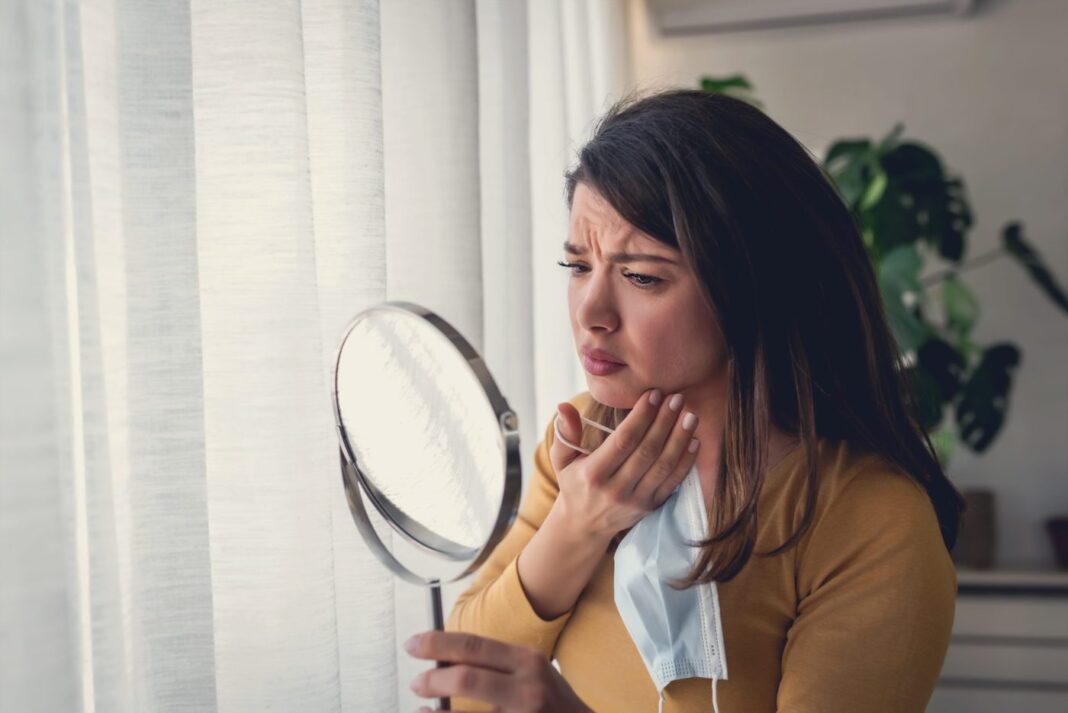A new study conducted by researchers in the department of dermatology at the University of California, San Diego has found previously unknown components in the pathogenesis of acne. The team discovered that “reactive adipogenesis in perifollicular dermal fibroblasts actively contributes to the pathophysiology of acne. This observation offers mechanistic insight into this common disease.”
The scientists’ paper “Antimicrobial production by perifollicular dermal preadipocytes is essential to the pathophysiology of acne” appears in Science Translational Medicine.
Alan M. O’Neill, PhD, and colleagues conducted a study to obtain a better understanding of the role of fibroblasts—the most common cell type in connective tissue and a crucial component of wound healing—in acne. The researchers believed that dermal fibroblasts in humans would display a response consistent with reactive adipogenesis (the formation of fat cells) which was modeled in human and mouse skin lesions with Cutabacterium acnes (C. acnes) development, which was then was modified by retinoid treatment. The results showed that dermal perifollicular fibroblasts, through their adipogenesis reaction, have a previously unknown role in the pathogenesis of acne.
First, the team collected lesional and non-lesional skin biopsies from six acne patients and mouse skin lesions infected with C. acnes, and conducted single-cell RNA sequencing of the fibroblast transcriptome. They identified five distinct fibroblast subsets, two of which were found to be “highly enriched in lesional acne.” When stimulated, these fibroblasts differentiated into adipocytes and initiated an innate immune defense response, consistent with the belief that reactive adipogenesis could be a part of acne pathogenesis.
Release of antimicrobial peptides
The first step of reactive adipogenesis is the release of antimicrobial peptides, also known as host defense peptides. This inflammatory immune response in acne is driven by an exposure to bacterial products, which explains the inflammatory presentation of acne in humans. Specifically, this inflammatory response is partially dependent on TLR2, a pattern recognition receptor that influences the inflammatory response.
Dermal adipocytes express high levels of TLR2 on their cell surface and are biologically primed to respond to bacterial invasion. The research showed that following the activation of TLR2, an induction of increased lipid synthesis and cathelicidin occurs.
Moreover, the scientists state that the deletion of TLR2 in primary fibroblasts suppressed certain binding proteins (Camp and Cebpb) when stimulated with C. acnes, “supporting the contribution of TLR2 to acne and suggesting that adipocyte activation may be an important signaling pathway in this disease.”
Importantly, this study reinforces the effectiveness of retinoids as a therapy in acne prevention and treatment. Retinoids induce cathelicidin and decrease lipid synthesis in the dermal preadipocyte—so the inhibition of reactive adipogenesis in dermal fibroblasts will hinder the development of acne in humans.
Although acne presents itself physically, it has a plethora of psychological, psychosocial, and economic effects for an affected individual. This deeper understanding of the pathophysiology of acne may allow for the development of new therapies.



